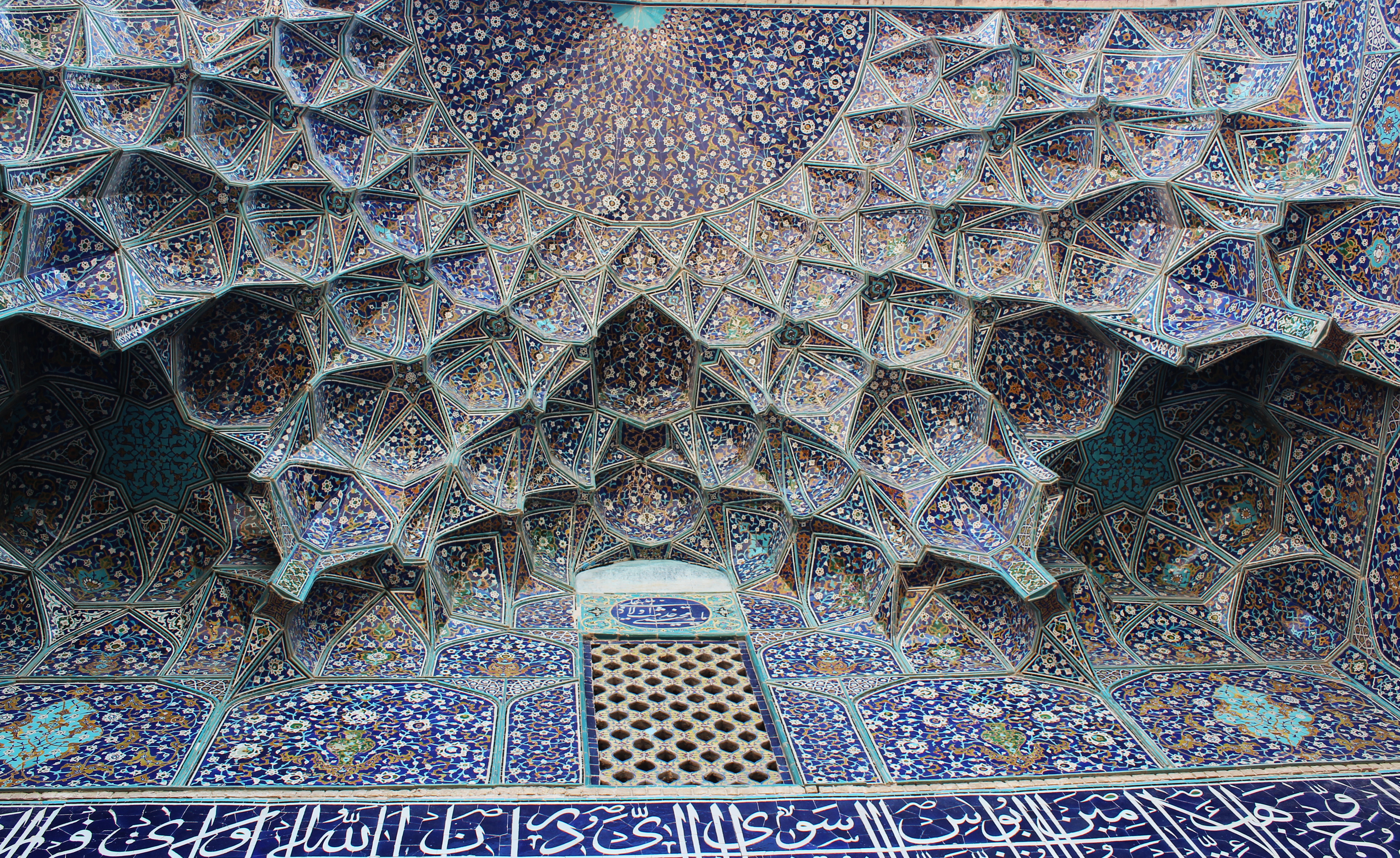Glazed in History: The Dazzling Art of Iranian Tilework

By: Daniel Azin
In the heart of Iran, color is more than decoration—it’s language. Nowhere is that more evident than in the shimmering tiles that cloak mosques, palaces, and bazaars across the country. From the turquoise domes of Isfahan to the intricate mosaics of Shiraz, Iranian tilework—known as kashi kari—is a centuries-old art form that transforms architecture into poetry.
A Symphony in Color and Geometry
To step into an Iranian mosque is to step inside a kaleidoscope. The tiles—brilliant blues, deep cobalts, sunny yellows, and lush greens—dance across walls and ceilings in precise geometric harmony. Each motif is both mathematical and spiritual, reflecting a belief that beauty and divine order are intertwined.
Unlike Western traditions that often center on realism, Iranian tilework celebrates abstraction. Endless stars, arabesques, and calligraphic curves draw the eye inward, inviting contemplation. The repetition is not monotony—it’s meditation. To trace the patterns is to glimpse infinity.
From Clay to Canvas
The process of creating these tiles is as meticulous as the final masterpiece. Artisans begin with simple clay, shaping and firing it into small squares. Then comes the alchemy: hand-painted glazes in mineral-based pigments that, when fired again, fuse into glass-like brilliance. The colors aren’t just surface-deep—they’re eternal, resistant to fading even after centuries of desert sun.
Among the most famous techniques is haft-rang or “seven-color” tilework, perfected during the Safavid era (16th–17th centuries). It allowed artists to paint multiple colors on a single tile, dramatically speeding up production while opening new avenues for storytelling and design. Scenes of gardens, birds, poets, and kings blossomed across palace walls, each tile a verse in a visual poem.
A Legacy Written in Architecture
Nowhere does tilework reach such majestic heights as in Isfahan, often called “half the world” for its beauty. The Shah Mosque’s vast dome glows with thousands of turquoise and azure tiles that shift tone with the light. The result is breathtaking—a structure that seems to breathe color.
In Shiraz, the Nasir al-Mulk Mosque—known to travelers as the “Pink Mosque”—adds a romantic twist to the tradition. Its delicate floral patterns in rose and gold, combined with stained glass windows, flood the interior with a sunrise of color. Meanwhile, in Yazd, the world’s tallest tiled minarets stand as testaments to human precision and devotion.
Beyond religious architecture, tilework adorns public baths, caravanserais, and gardens, uniting Iran’s cities with a shared visual identity. Even humble village homes may feature a splash of glazed blue at the doorway—an echo of an ancient aesthetic that values beauty in everyday life.
Art That Endures
Iranian tilework has survived invasions, revolutions, and modernization. Its endurance lies in its adaptability. Contemporary artists now reinterpret traditional motifs in modern forms—ceramic murals in Tehran’s subway stations, sculptural installations in galleries, even fashion and digital design inspired by the rhythmic geometry of old domes.
At its core, kashi kari is more than ornament. It is philosophy rendered in glaze: a belief that art can elevate the spirit, that mathematics and mysticism can coexist, and that beauty, once created, can last forever.
A Living Tradition
Today, visitors wandering through Iran’s ancient cities still find master craftsmen hunched over tiles in small workshops, mixing pigments, tracing patterns by hand, and whispering prayers as they work. Each piece they create carries forward a thousand years of artistry.
As the afternoon light strikes the tiles of a mosque, and the blues shimmer like water, one feels the timelessness of it all. The art of Iranian tilework is not frozen in history—it is alive, breathing, glowing, reminding us that even clay and color can hold the soul of a civilization.
Photo:AdobeStock

